|
|
|

|
|||||

|
|

Homebuilder D.R. Horton (NYSE:DHI) beat Wall Street’s revenue expectations in Q3 CY2025, but sales fell by 3.2% year on year to $9.68 billion. On the other hand, the company’s full-year revenue guidance of $34.25 billion at the midpoint came in 1.7% below analysts’ estimates. Its GAAP profit of $3.04 per share was 7.7% below analysts’ consensus estimates.
Is now the time to buy D.R. Horton? Find out by accessing our full research report, it’s free for active Edge members.
One of the largest homebuilding companies in the U.S., D.R. Horton (NYSE:DHI) builds a variety of new construction homes across multiple markets.
A company’s long-term performance is an indicator of its overall quality. Even a bad business can shine for one or two quarters, but a top-tier one grows for years. Luckily, D.R. Horton’s sales grew at an impressive 11% compounded annual growth rate over the last five years. Its growth beat the average industrials company and shows its offerings resonate with customers.
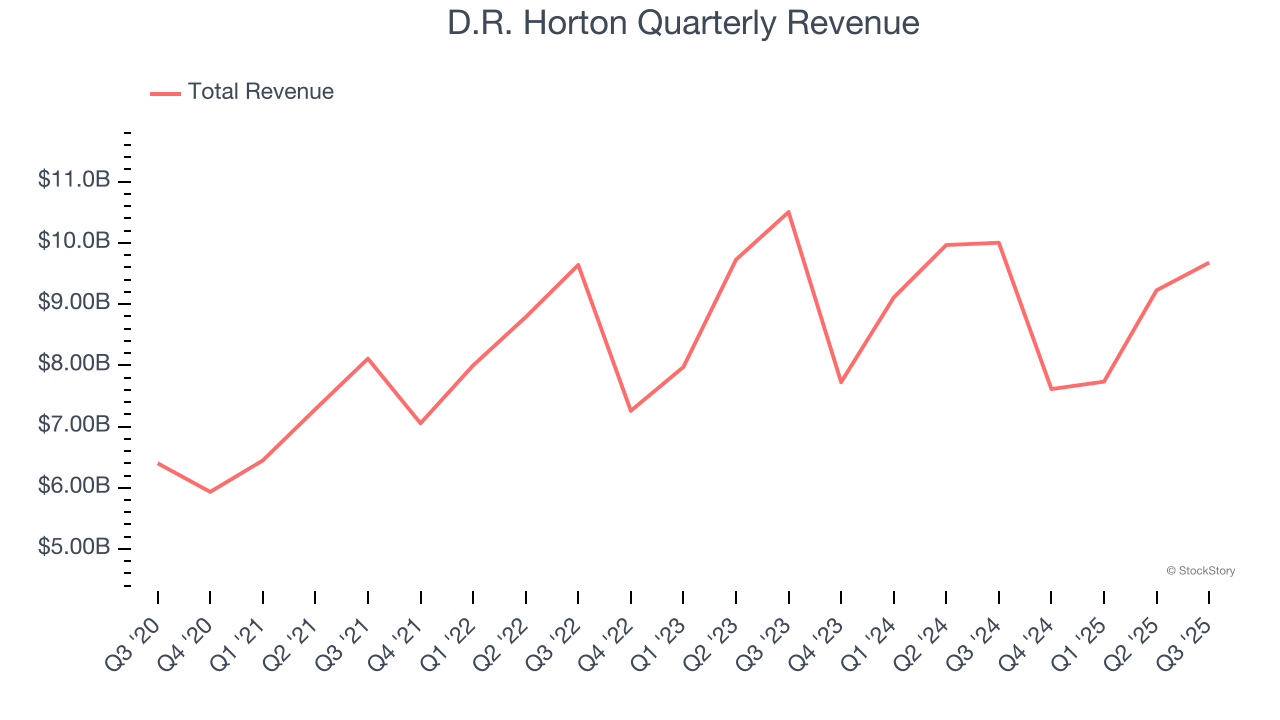
Long-term growth is the most important, but within industrials, a half-decade historical view may miss new industry trends or demand cycles. D.R. Horton’s recent performance marks a sharp pivot from its five-year trend as its revenue has shown annualized declines of 1.7% over the last two years.
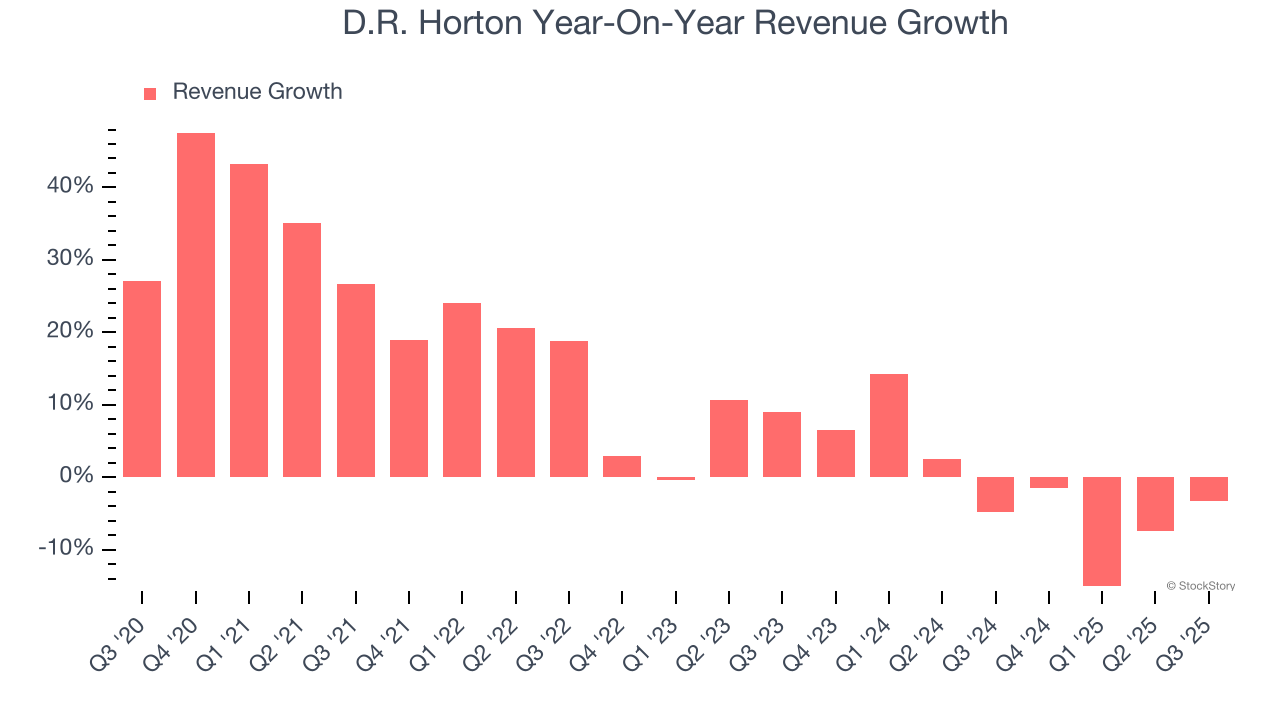
We can better understand the company’s revenue dynamics by analyzing its backlog, or the value of its outstanding orders that have not yet been executed or delivered. D.R. Horton’s backlog reached $4.12 billion in the latest quarter and averaged 15.5% year-on-year declines over the last two years. Because this number is lower than its revenue growth, we can see the company hasn’t secured enough new orders to maintain its growth rate in the future.
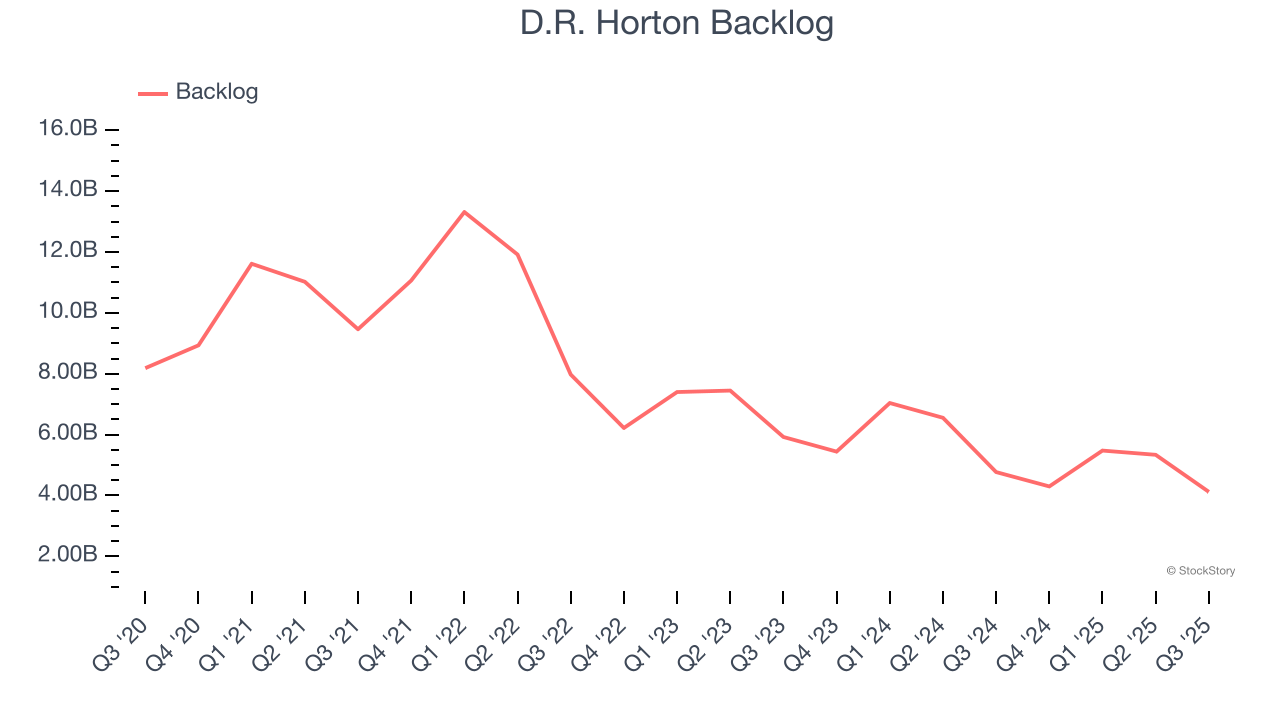
This quarter, D.R. Horton’s revenue fell by 3.2% year on year to $9.68 billion but beat Wall Street’s estimates by 2.7%.
Looking ahead, sell-side analysts expect revenue to grow 1.5% over the next 12 months. Although this projection suggests its newer products and services will catalyze better top-line performance, it is still below the sector average.
Unless you’ve been living under a rock, it should be obvious by now that generative AI is going to have a huge impact on how large corporations do business. While Nvidia and AMD are trading close to all-time highs, we prefer a lesser-known (but still profitable) stock benefiting from the rise of AI. Click here to access our free report one of our favorites growth stories.
D.R. Horton has been a well-oiled machine over the last five years. It demonstrated elite profitability for an industrials business, boasting an average operating margin of 17.5%. This result was particularly impressive because of its low gross margin, which is mostly a factor of what it sells and takes huge shifts to move meaningfully. Companies have more control over their operating margins, and it’s a show of well-managed operations if they’re high when gross margins are low.
Looking at the trend in its profitability, D.R. Horton’s operating margin decreased by 6.2 percentage points over the last five years. This raises questions about the company’s expense base because its revenue growth should have given it leverage on its fixed costs, resulting in better economies of scale and profitability.
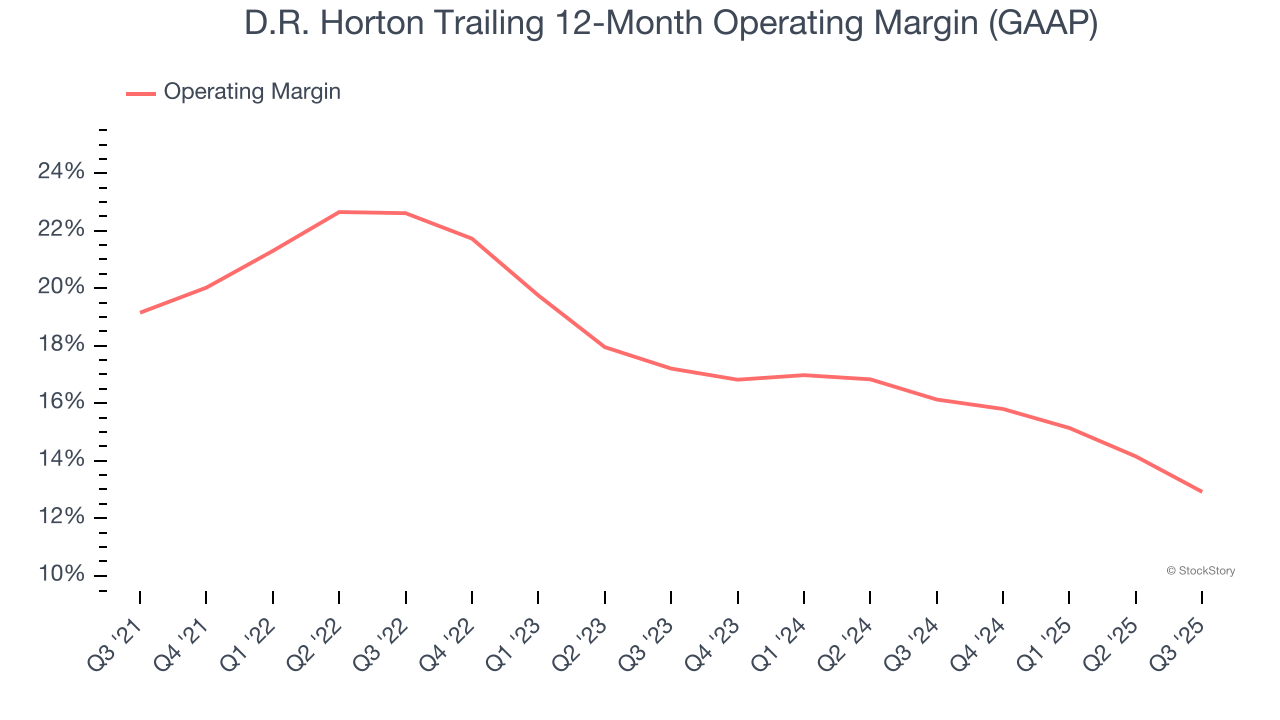
This quarter, D.R. Horton generated an operating margin profit margin of 11.6%, down 4.3 percentage points year on year. Since D.R. Horton’s operating margin decreased more than its gross margin, we can assume it was less efficient because expenses such as marketing, R&D, and administrative overhead increased.
We track the long-term change in earnings per share (EPS) for the same reason as long-term revenue growth. Compared to revenue, however, EPS highlights whether a company’s growth is profitable.
D.R. Horton’s remarkable 12.6% annual EPS growth over the last five years aligns with its revenue performance. This tells us it maintained its per-share profitability as it expanded.
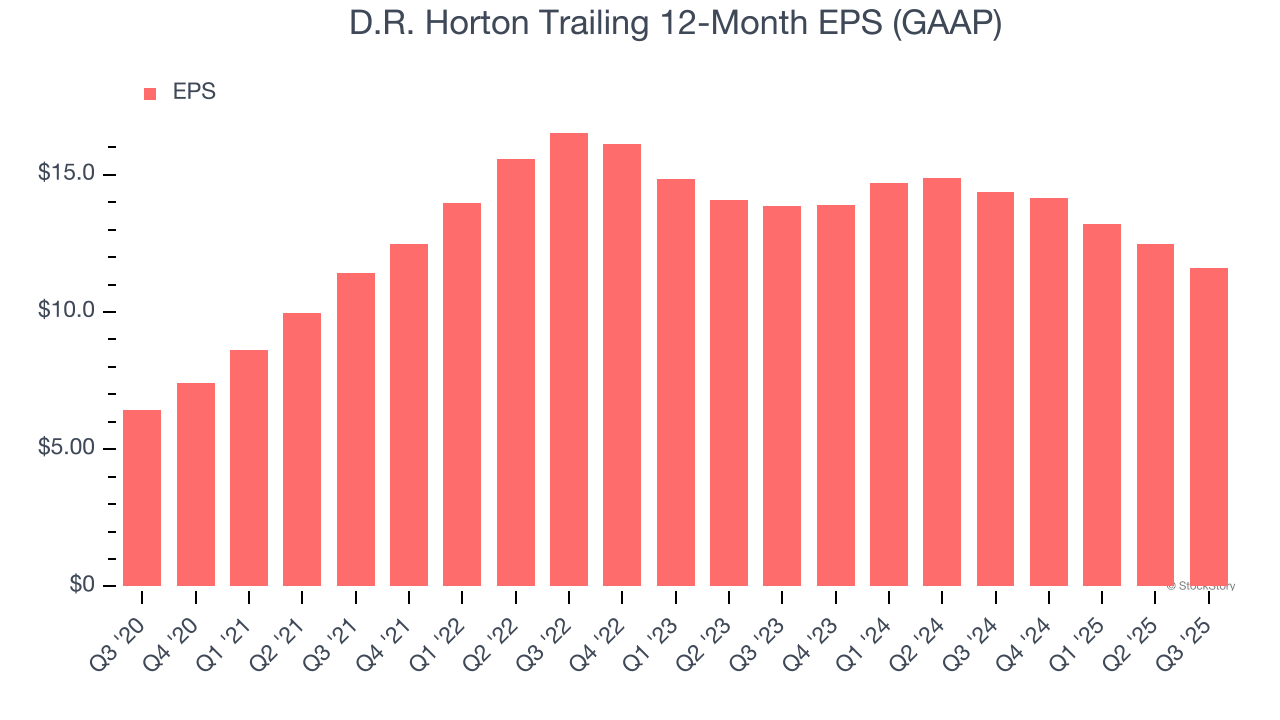
Like with revenue, we analyze EPS over a more recent period because it can provide insight into an emerging theme or development for the business.
D.R. Horton’s two-year annual EPS declines of 8.5% were bad and lower than its two-year revenue losses.
We can take a deeper look into D.R. Horton’s earnings to better understand the drivers of its performance. D.R. Horton’s operating margin has declined over the last two years. This was the most relevant factor (aside from the revenue impact) behind its lower earnings; interest expenses and taxes can also affect EPS but don’t tell us as much about a company’s fundamentals.
In Q3, D.R. Horton reported EPS of $3.04, down from $3.92 in the same quarter last year. This print missed analysts’ estimates, but we care more about long-term EPS growth than short-term movements. Over the next 12 months, Wall Street expects D.R. Horton’s full-year EPS of $11.59 to grow 5.2%.
We were impressed by how significantly D.R. Horton blew past analysts’ backlog expectations this quarter. We were also glad its revenue outperformed Wall Street’s estimates. On the other hand, its EBITDA missed and its EPS fell short of Wall Street’s estimates. Overall, this was a softer quarter. The stock traded down 5.5% to $150 immediately after reporting.
Should you buy the stock or not? What happened in the latest quarter matters, but not as much as longer-term business quality and valuation, when deciding whether to invest in this stock. We cover that in our actionable full research report which you can read here, it’s free for active Edge members.
| Dec-06 | |
| Dec-05 | |
| Dec-04 | |
| Dec-04 | |
| Dec-04 | |
| Dec-04 | |
| Dec-03 | |
| Dec-03 | |
| Dec-02 | |
| Dec-02 | |
| Dec-01 | |
| Nov-27 | |
| Nov-26 | |
| Nov-26 | |
| Nov-25 |
Join thousands of traders who make more informed decisions with our premium features. Real-time quotes, advanced visualizations, backtesting, and much more.
Learn more about FINVIZ*Elite